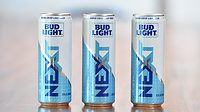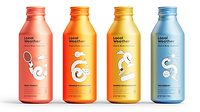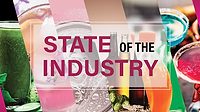2022 State of the Beverage Industry | Juice market remains weak
Brands embrace sugar reduction, functionality to boost juice market

As the juice and juice drinks category sees increasing competition from emerging beverage categories, beverage-makers are looking to reimage this classic category.
“The overall juice market has continued to struggle in recent years on account of changing consumer preferences,” said Dmitry Diment, senior analyst at New York-based IBISWorld, in Beverage Industry’s January 2022 eMagazine. “Americans have increasingly moved toward healthier consumption patterns, which has hurt traditional drinks high in calories, sugar and additives. Still, as companies have sought to introduce healthier options and the rise in spending since the outset of the pandemic, overall juice production revenue rose 0.1% in 2020 and is projected to rise 0.4% in 2021.”
Diment noted much of this performance can be attributed to the effects from the pandemic on shopping habits, particularly within the grocery and supermarket channel.
“According to IBISWorld estimates, grocery stores and supermarkets represent the largest market for juice products, accounting for 36.5% of revenue in 2021,” he said. “Another significant market includes warehouse clubs and supercenters, which is estimated to account for 27.9% of the juice product market in 2021. Both of these markets have benefited from societal reorientations during the pandemic.”
|
|
DOLLAR SALES | % CHANGE vs PRIOR YEAR | MARKET SHARE | % CHANGE vs PRIOR YEAR | |
| 1 | Tropicana | $995,352,271 | -8 | 29.8 | -2.9 |
| 2 | Simply | $896,535,003 | 8.1 | 26.9 | 1.8 |
| 3 | Private Label | $703,544,022 | 6.8 | 21.1 | 1.2 |
| 4 | Florida's Natural | $358,852,885 | 9 | 10.8 | 0.8 |
| 5 | Minute Maid | $134,371,424 | -24.3 | 4 | -1.3 |
|
|
Category Total* | $3,338,190,579 | 0.9 | 100 | --- |
*Includes brands not listed
Source: Information Resources, Inc. (IRI), Chicago. Total U.S. supermarkets, drug stores, gas and convenience stores, mass merchandisers, military commissaries, and select club and dollar retail chains for the 52 weeks ending May 15.
In New York-based Beverage Marketing Corporation’s (BMC) report “Beverages 2022: What’s In Store?,” the market research firm noted that for 2021 fruit beverages were estimated to have a wholesale volume decline of 0.5%. The category’s volume is projected to decline between 1-2% for 2022.
Noting the soft performance within the juice and juice drinks category, Gary Hemphill, managing director of research for BMC, said the overall impact on juice from the pandemic is more minimal when foodservice sales are taken into account.
“Sales did shift from on-premise to take-home channels like with most other beverage categories but overall performance has remained weak,” he said in Beverage Industry’s January 2022 eMagazine.
Despite these volume declines, some segments within the juice and juice drinks category saw dollar sales increase. According to data from Chicago-based Information Resources Inc. (IRI), the refrigerated juice and juice drinks segment totaled $7.8 billion in sales for the 52 weeks ending May 15. This is a 4.8% increase from the prior year. Volume for this segment was relatively flat with a slight increase of 0.7%.
Shelf-stable bottled juice meanwhile saw dollar sales increase 4.6%, totaling $8.1 billion, but volume was down 4.2%.
|
|
DOLLAR SALES | % CHANGE vs PRIOR YEAR | MARKET SHARE | % CHANGE vs PRIOR YEAR | |
| 1 | Snapple | $346,736,615 | 11.2 | 13.9 | 0.8 |
| 2 | Bai | $297,648,362 | -1.7 | 12 | -0.8 |
| 3 | Hawaiian Punch | $213,810,915 | 2.1 | 8.6 | -0.3 |
| 4 | V8 | $195,090,731 | -6.3 | 7.8 | -1 |
| 5 | Arizona | $148,081,357 | 18.2 | 6 | 0.7 |
|
|
Category Total* | $2,487,014,081 | 5.2 | 100 | --- |
*Includes brands not listed
Source: Information Resources, Inc. (IRI), Chicago. Total U.S. supermarkets, drug stores, gas and convenience stores, mass merchandisers, military commissaries, and select club and dollar retail chains for the 52 weeks ending May 15.
Albeit a smaller base, the aseptic juice segment exhibited notable growth with dollar sales up 15.5%, totaling $1.7 billion, and volume up 5.1%.
Although increased competition and sugar content has challenged juice where it currently stands, experts note that opportunities still remain for the category to align with consumers’ wants and needs.
“Younger consumers, primarily the millennial generation, want more than just traditional juice,” IBISWorld’s Diment said. “They want an innovative blend of flavors that is both nutritious and delicious. Due to these changes, the industry has updated its product offerings. Tropical flavors such as mango and pineapple have been on the rise as consumers seek exotic and creative healthy alternatives.”
In line with this trend, Tropicana Brands Group, a joint venture between PAI Partners and PepsiCo, announced earlier this year that it was expanding its Naked Juice smoothie line with Orange Vanilla Crème and Key Lime varieties. Each are made with almond and coconut milks and are sweetened with monk fruit.
Clermont, Fla.-based Uncle Matt’s Organic also is addressing sugar reduction in juice with its launch of Matt50 Orange Juice Beverage. The new line contains half the sugar and calories of regular orange juice, but also is enhanced with prebiotics and probiotics to support digestive and immune health, the company notes.
BMC’s 2021 “The Fruit Beverage Market in the U.S.” report highlights several strategies that are inspiring new releases within the juice and juice drink category.
“One is to introduce lower-calorie versions of existing products by mixing in coconut water (which is considered a juice by the USDA),” the report states. “Lemonade has been one of the few hot flavors in fruit drinks in the past decade or so (even it has slowed somewhat recently), prompting steady new product activity. Another area for marketers to experiment with is organic. Relatedly, the success of Honest Tea has prompted competitors to introduce healthier fruit drinks in pouches for kids.”
Looking for a reprint of this article?
From high-res PDFs to custom plaques, order your copy today!








